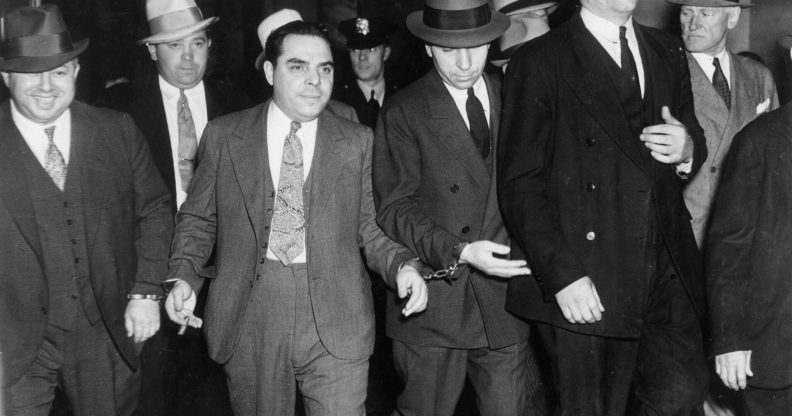The Italian Mafia played a pivotal role in the 1969 Stonewall uprising – but don’t call them allies

Sicilian Mafia boss Salvatore “Lucky” Lucanio leaving the court in New York on June 18, 1936 (Apic/Getty Images)
The legendary Stonewall Inn will forever be remembered as the birthplace of LGBT+ rights – but the Mafia’s role in the story is lesser known, and far more murky.
You might think the Italian mob and gay clubs don’t exactly go hand in hand, but as far back as the 1930s these seemingly oppositional groups made a profitable, if uneasy, match.
In the days when queer people were vilified and criminalised, it was the Mafia who gave them a place to meet, mingle and eventually coalesce as a movement. That didn’t mean they were allies, though.
As New York’s gay scene began to take shape in the 60s, it was still illegal to serve gay patrons alcohol, to display homosexuality in public or for two gay people to dance together.
Bars that catered to queer patrons were regularly raided by the NYPD under the guise of tackling “disorderly” premises, and owners could lose their liquor licenses if caught playing host to such “criminality”.
The LGBT+ community were desperate. But where the law saw deviance, the Mafia saw profit – and the finocchio (“fairies”) were good business.
“The Mafia didn’t much care about enforcing societal mores or respecting government rules,” historical author Phillip J Crawford told Vice.
“Sure, many mobsters had a homophobic bent and often expressed their contempt for gay patrons, but generally there was a benign tolerance for the LGBT+ community based on financial interests, and they separated their personal lives from business affairs.”
The mob had maintained a stranglehold on nightlife since the end of Prohibition, and by the 60s it had a near-monopoly on New York City’s gay bars. The Stonewall Inn was no different.
In 1969 the bar was secretly owned by Matthew “Matty the Horse” Ianiello, a high-level caporegime in the Vito Genovese crime family.
He and his associates regularly greased the palms of the NYPD in exchange for turning a blind eye, and their monthly payoff of $1,200 to the 6th Precinct allowed the Stonewall Inn to thrive as one of the largest gay bars in America.
It had no fire exits, no running water, and the toilets routinely overflowed. But it was a place where queer people were free to be themselves, and it quickly became an institution.
The mob was still the mob though, and in exchange for this protection Stonewall’s patrons had to put up with cheap, watered-down alcohol sold at ridiculously high mark-ups.
Even with that protection bar owners still had to let the police run “show raids” to appease the neighbours, sacrificing some of their patrons to humiliating arrests. Those that weren’t arrested were often subjected to blackmail by the Mafia itself.
These ugly, underhanded business tactics were standard for gay bars at the time – until New York’s queer community refused to put up with it any longer.
“The mob’s exploitation of the gay community was among the reasons for the 1969 protests outside the Stonewall Inn,” Crawford said.
“Indeed, after the Stonewall protests, one of the principal goals of the activist groups such as Gay Activists Alliance and Gay Liberation Front was to get organised crime out of the gay bars.”
Within days of the riots, activists were handing out leaflets condemning “the Mafia monopoly,” and their fury was reflected in the graffiti on the Stonewall’s boarded-up windows: “GAY PROHIBITION CORRUPT$ COP$ / FEED$ MAFIA”.
The historic demonstrations were a turning point for LGBT+ rights and fuelled the modern day equality movement. But the mob proved hard to shake off, and the Mafia continued to play a role in gay bars well into the 1970s and beyond.
Today, the legacy of this ambiguous alliance remains controversial.
While the mob’s relationship with the gay community may have been mutually beneficial, it was far from equally beneficial, and the mob’s stranglehold on New York’s nightlife was undoubtedly exploitative.
Yet it provided gay people with a much-needed haven at a time when most other venues shunned them, giving New York’s early queer culture a place to grow and flourish.
Indeed, it was a Mafia-controlled bar, The Lion, where gay icon Barbra Streisand made her first public singing performance in 1960.
And on 28 June, 1969, the mobsters were a necessary evil at the epicentre of an event that would shape LGBT+ history forever.


